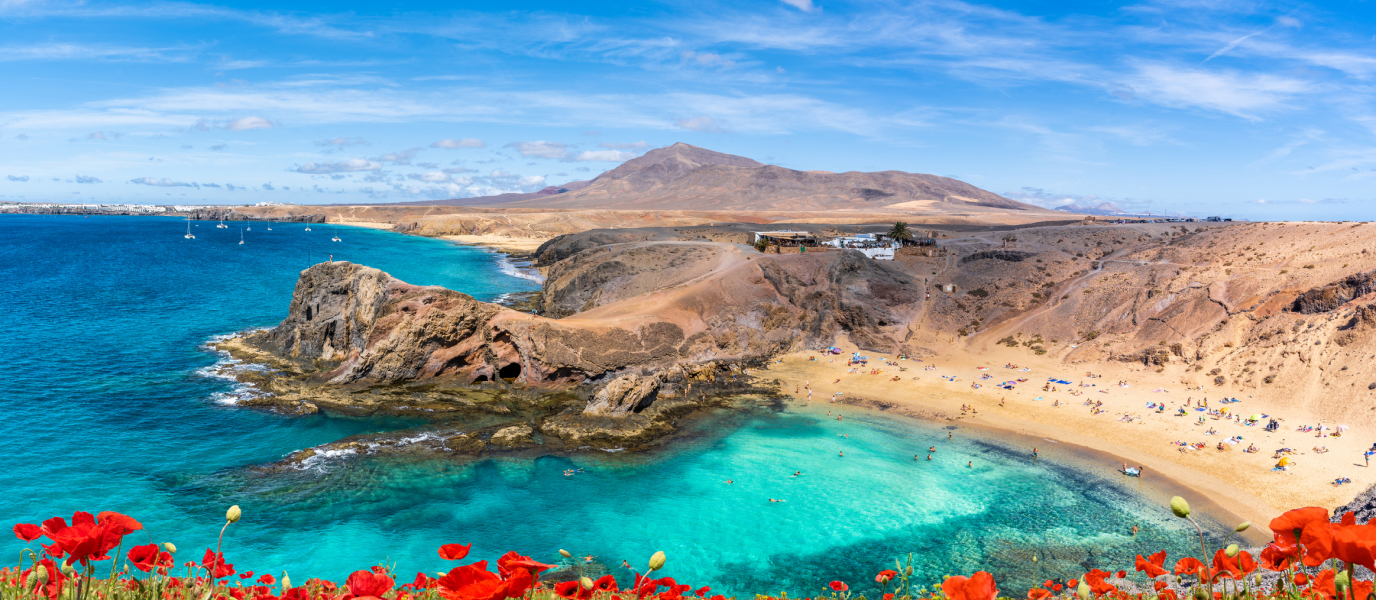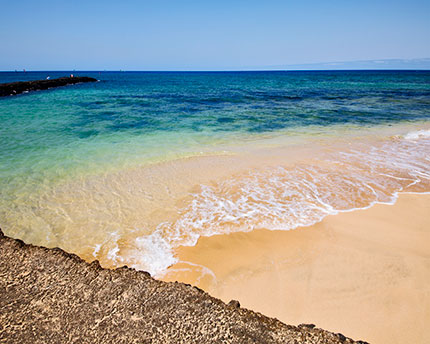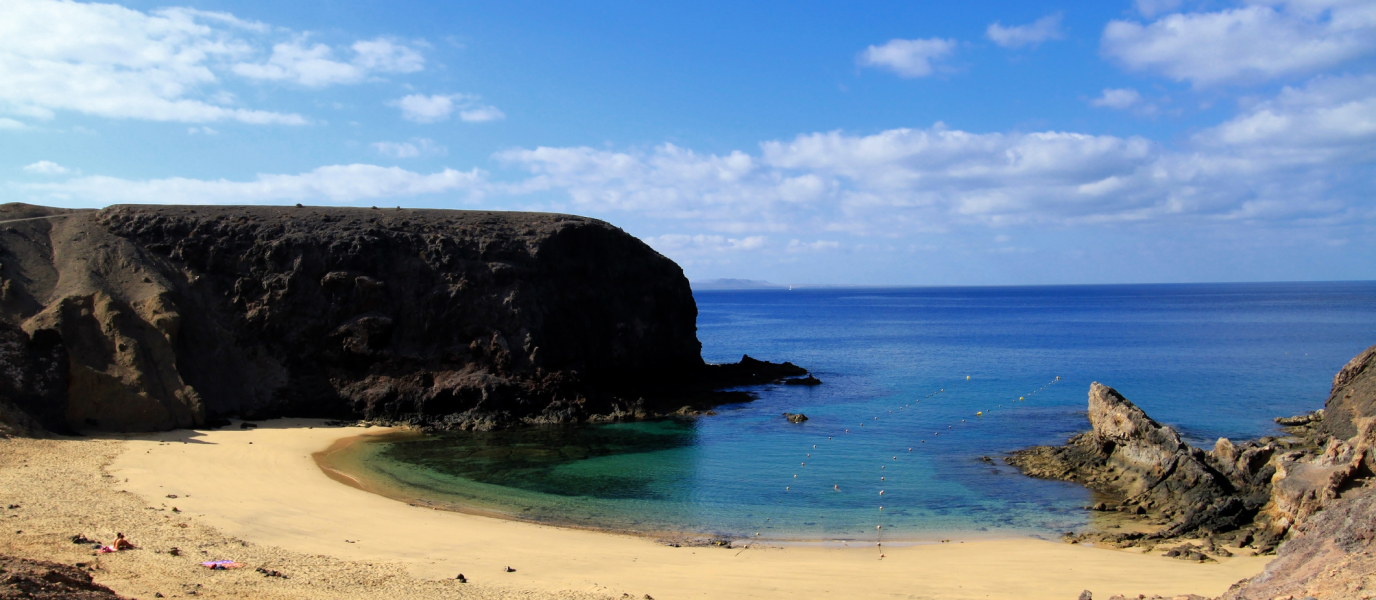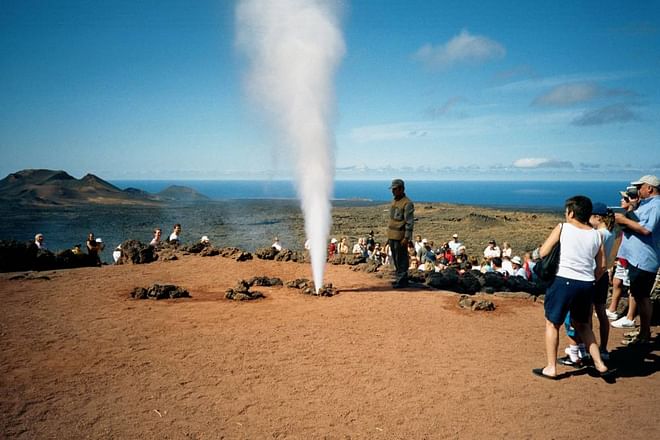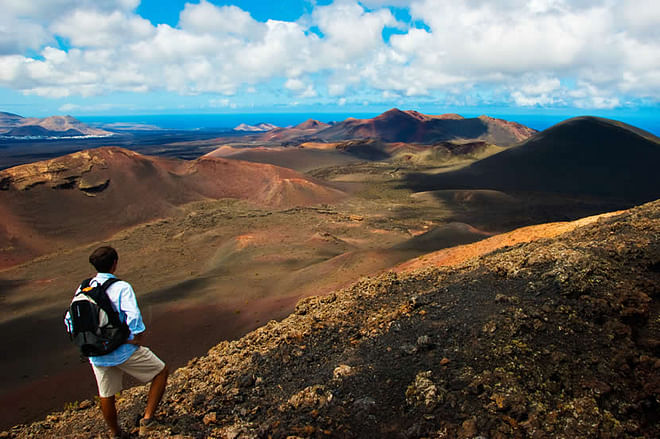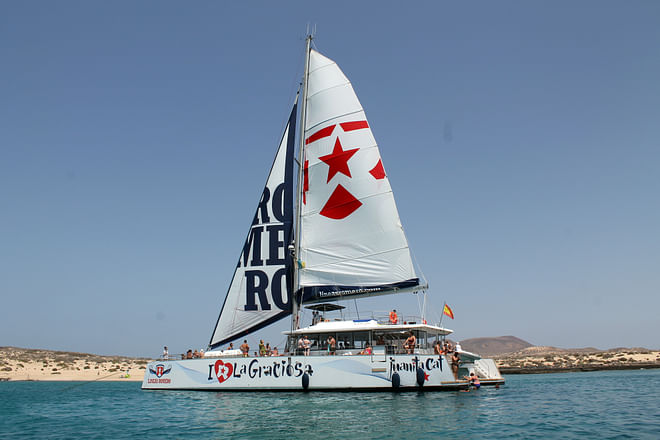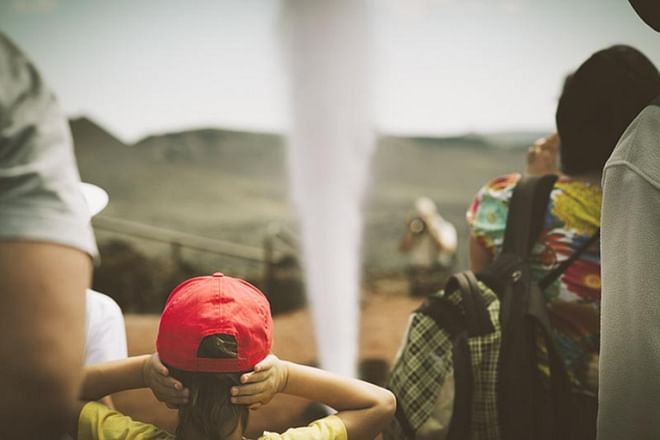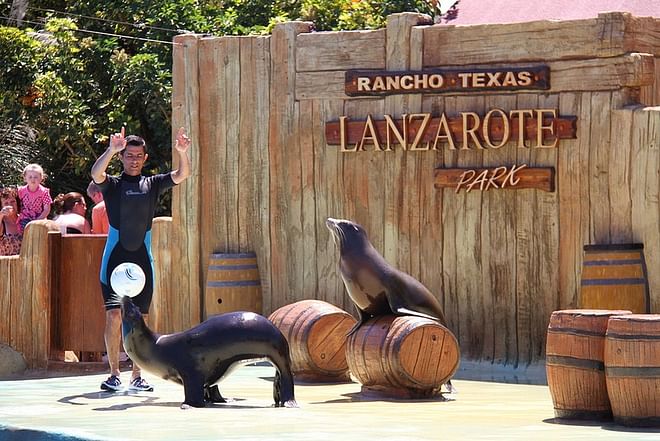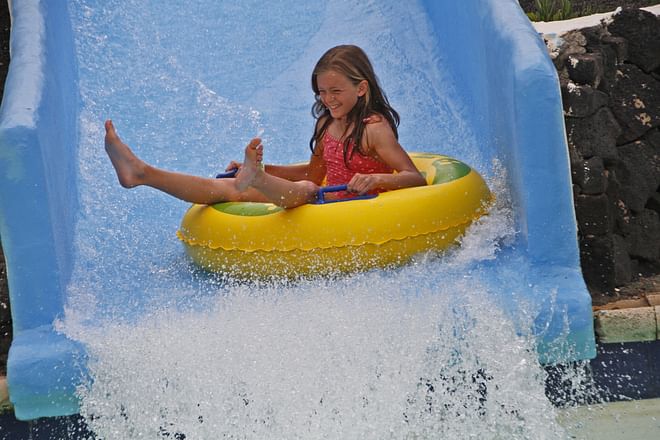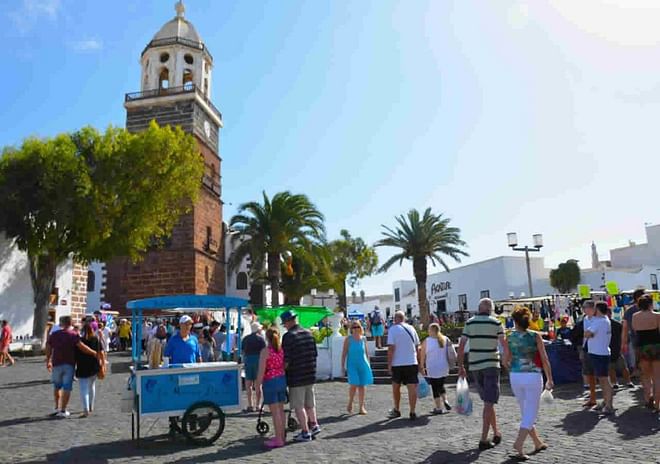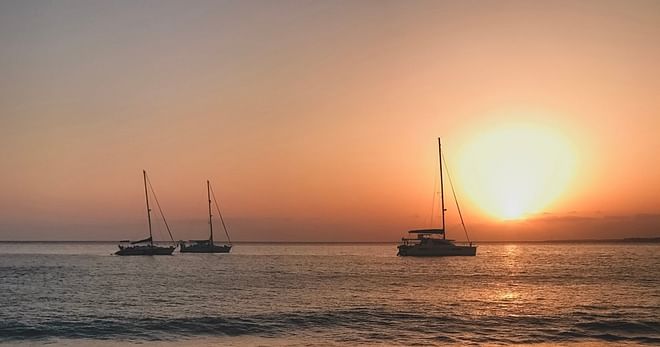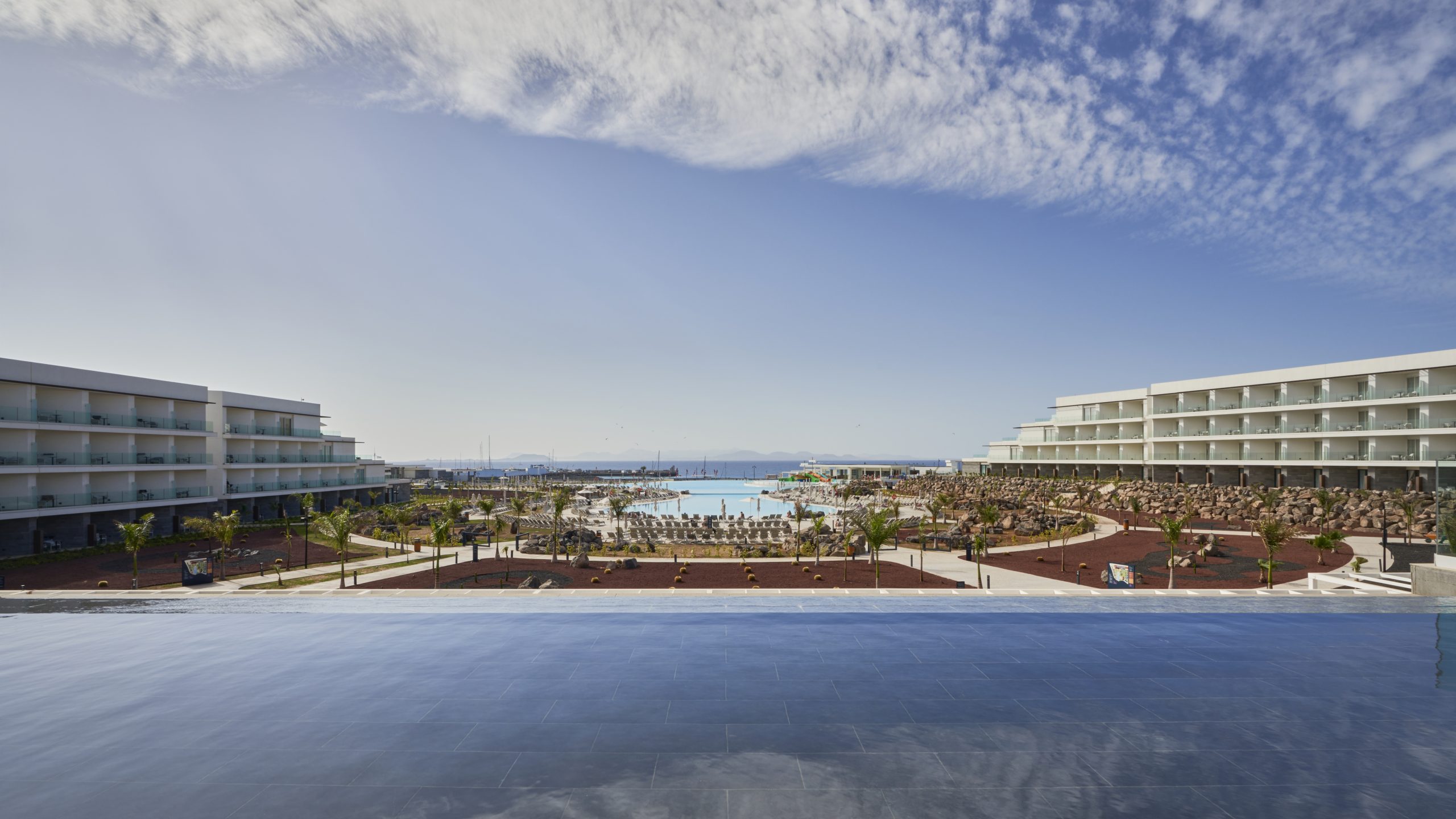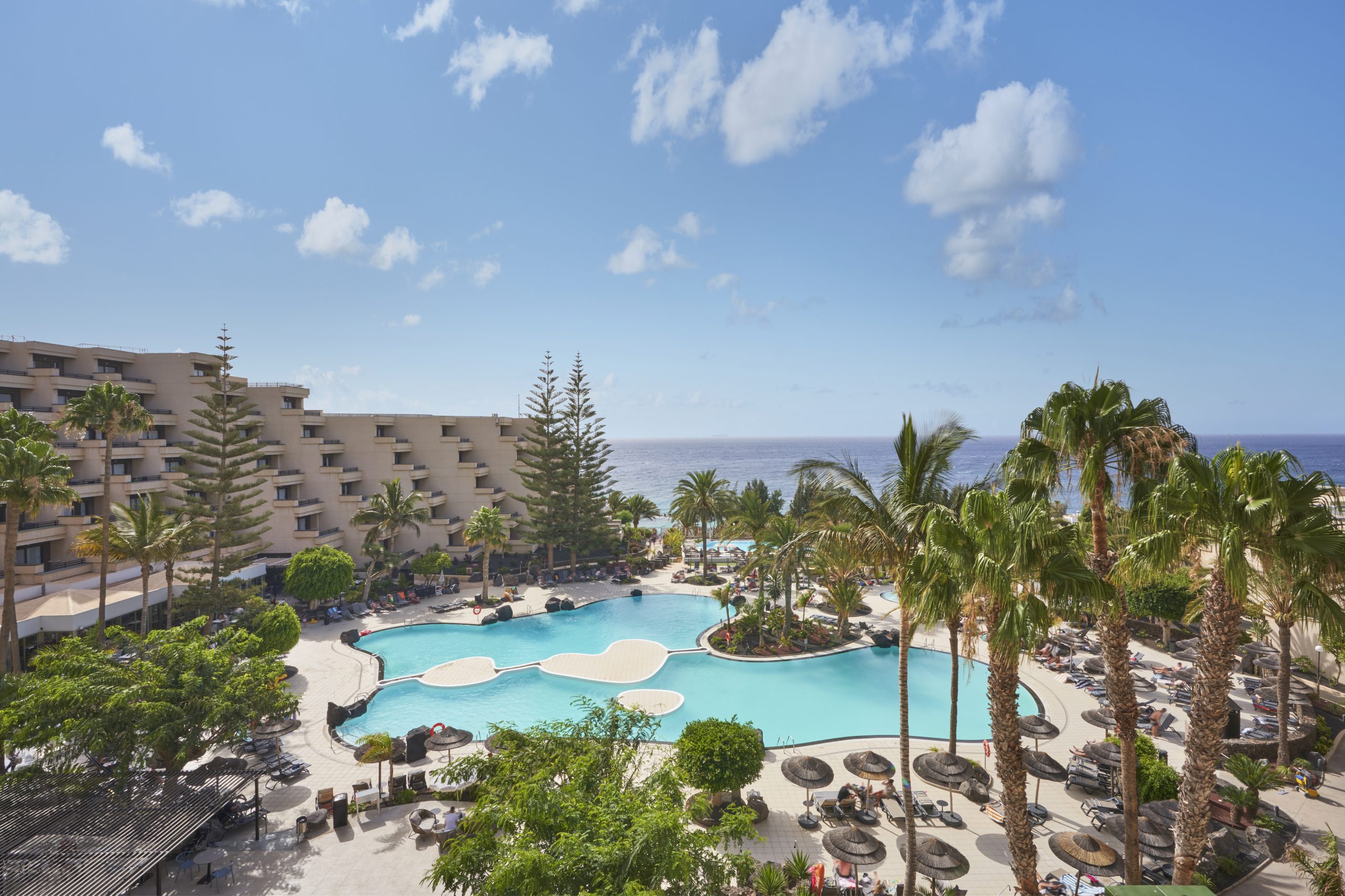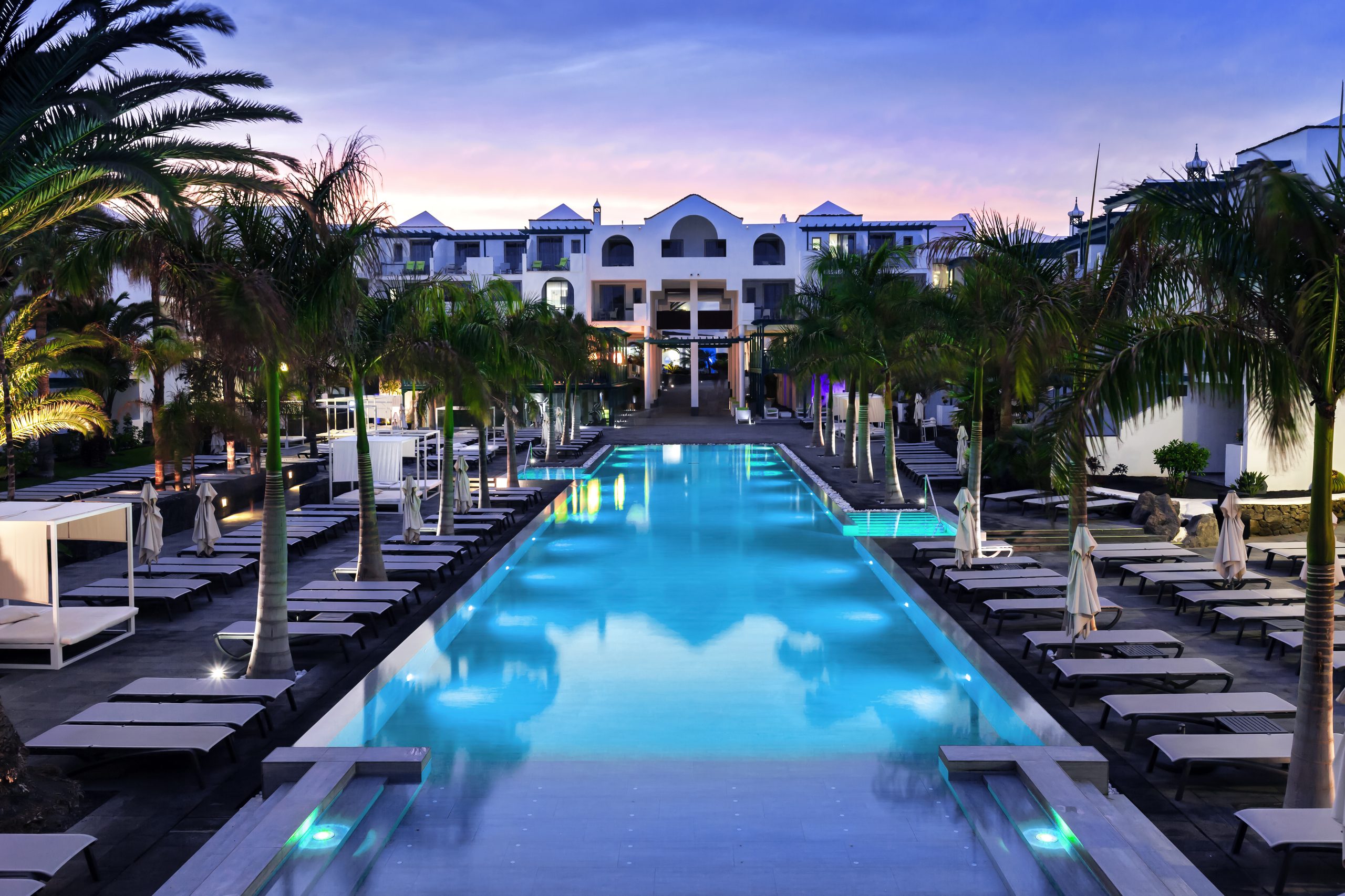The volcanic beauty of Lanzarote is framed by a calm ocean of transparent blue waters and a sea bed teeming with life, which extends a constant invitation to enjoy water sports. The average temperature of the water (hovering at around 20oC) ensures that Lanzarote’s beaches remain an additional bonus to its scenery and its cultural and gastronomic attractions throughout the year.
The range of beaches and natural swimming pools on Lanzarote offers endless choices, whatever the tastes of the individual. You will find pristine, secluded beaches, where families are catered for and everything children need is provided—and urban beaches with a host of bars, restaurants and chill-out terraces from which you can watch the most breathtaking sunsets.
Among the broad range of beaches along the shoreline, there are some coves considered unmissable on any trip to Lanzarote. The beaches where locals and visitors mingle are: Papagayo, Famara and Caletón Blanco—although the island of La Graciosa is an alternative well worth bearing in mind.
Papagayo beaches
The first beach, El Papagayo, though not large, has an awe-inspiring beauty. Its shell-like shape, white sand and emerald-coloured waters are its main claims to fame. Its calm sea is just one of the attractions that lure families with children here, where the shallow water and near absence of waves mean that parents can relax too. This is an ideal place to explore the sea bed by snorkelling, an activity enjoyed by young and old alike. Other beaches within easy reach include Mujeres, Playa del Congrio and Puerto Muelas. Together, these are known as the Papagayo beaches, and all have tempting turquoise waters.
Playa de Famara
Situated in the Chinijo Archipelago Natural Park (between the village of La Caleta de Famara and the cliffs of the Risco de Famara) lies an inlet of golden sand, five kilometres in length and known by the name of Famara. Its enduring image is of the mirror-like pool of water created as the tide goes out which reflects the cliff, as though allowing us a glimpse of another dimension of reality. If Papagayo is a calm place, Famara is the exact opposite: its powerful swell and the constant wind allows lovers of water sports, such as surfing, windsurfing and kitesurfing, to have the time of their lives. In the nearby village of La Caleta de Famara, there are plenty of restaurants to help visitors replenish the energy they have expended. To complete a day visiting Famara’s beaches, wait for sunset. Then you can admire the glorious colours of the sky and, on the horizon, the jagged silhouette of the Island of La Graciosa.
Playas de los Caletones
Particularly charming (and one of Lanzarote’s most popular beaches) is Caletón Blanco which, as its name suggests, is a cove with calm waters framed by a border of white sand that give it the appearance of a natural swimming pool. It has very safe areas, perfect for children, and other, deeper spots where you can swim freely. As the cove is littered with volcanic lava, it is advisable to bathe only when the tide is in, although the beach is equally picturesque when the bare rocks are revealed. To find this cove in northern Lanzarote, just enter: Órzola (the name of the nearest fishing village) into your GPS. There is a car park, so access is more straightforward than with some beaches. If you still want more, there are 2 other inlets—Caleta de Mojón Blanco and Charca de la Laja which are shallow, and therefore ideal for families. The three are collectively known as Caletones de Órzola.
Beaches on La Graciosa
According to some residents of Lanzarote, the best beaches in the Canary Islands are to be found on La Graciosa, and they may well be right—as the island has extensive, unspoilt inlets embellished with the most incredible white sand dunes. Among them is the awe-inspiring Playa de las Conchas, with its clear waters and amazing views of the islets of Montaña Clara, Roque del Este and Alegranza.
Tourist beaches: Bastián, Blanca, Dorada, Matagorda and Grande
In Lanzarote’s main tourist resorts (Teguise, Playa Blanca and Puerto del Carmen) are urban beaches which offer a wealth of facilities for tourists. In Teguise, some of the beaches worth visiting are El Jablillo, Las Cucharas and Playa Bastián—all with white sand, stone walls and landscaped areas. At Playa Blanca, it is worth exploring the beaches of Flamingo, Blanca and Dorada—close to the hotels and blessed with golden sands. The third stretch is Puerto del Carmen, with well-known beaches such as Pocillos, Chica, Matagorda and Grande. These are in urban settings and offer a full range of tourist services.
Other noteworthy beaches, from north to south: Playa Bajo el Risco and Playa de la Garita
Playa Bajo el Risco is near the village of Yé and the Mirador del Río [viewing point]. Sheltered by the cliff of Famara, it is one of the quietest beaches on the island, as it can only be reached from the sea, or via the path known as the Camino de los Gracioseros. This explains why the inlet’s 500-metre stretch of beach is seldom crowded. The half-hour walk along the path (wearing suitable footwear) is worth the effort to admire the turquoise colours of the waters here, and to relax on the white sand. Also in the north of Lanzarote is Playa de la Garita, so if you visit the Cueva de los Verdes, the Jameos del Agua, the Jardín de Cactus or the Mirador del Río, this is a worthwhile addition to your excursion. This inlet is very popular with the residents of Arrieta, the adjacent village. There are bars and restaurants nearby where you can sample the delights of Canarian cooking; other facilities include showers, changing rooms, children’s playgrounds and car parks.
Playa del Pozo and Playa Quemada
It can be a little complicated finding Playa del Pozo, as it is only accessible on foot or using an all-terrain vehicle. If you are driving a saloon car, the nearest spot to leave your vehicle is at Playa Quemada. From there, you need to follow a path that partly runs through a protected area, the Monumento Natural de Los Ajaches. During the half-hour walk, you can admire the panoramic views, before arriving at a beach of dark sand and shingle. If you want to bathe here, it is advisable to wear booties or other footwear suitable for use in water. Try to remember to bring water with you, because there are no facilities here. As you return from the beach, take the time to explore Playa Quemada, another beach with dark-coloured sand and calm waters. At the weekends, Playa Quemada is usually very crowded with families, despite the lack of a hire service for sun loungers or sunshades, but during the week the beach is quieter.
Playa del Janubio
The outstanding beach in the municipality of Yaiza is Playa del Janubio. While there is no denying the beauty of this strip of black sand washed by the sea, you need to take care when bathing, as the currents can be dangerous. Perhaps for that reason, the beach displays a red flag, and there are few bathers, so this is a good place to relax or enjoy a good read in peace and quiet.
Playa del Ancla
One of the most popular beaches in the Teguise area is Playa del Ancla which, despite being only 40 metres long, still tends not to get too crowded. The beach is sheltered from the wind, and during the day its waters change colour—from deep blues through the entire spectrum of Caribbean shades. At dawn, the contrast with the black rock creates a most picturesque scene. Its position close to the Paseo de Bastián means that when you want a break from the beach, you can visit the nearby bars, restaurants and shops. And since you are in Costa Teguise, seize the opportunity to take a stroll around its outlying areas.
Playa Honda
Only five kilometres from Arrecife, the capital of Lanzarote, is Playa Honda, a unique spot, as it is close to the airport so you can watch the planes flying very low. It can be a good place to spend some time if your flight is experiencing a long delay. It is a large inlet, free from crowds, and with a promenade where you can eat lunch or have a drink. Finally, nudists may prefer to enjoy the total tranquillity of the outskirts of Charco del Palo, a village located very close to the Jameos del Agua.
Amongst this vast array of beaches, you will be certain to find one to spice up your Instagram profile. Shall we bet on one?




































































